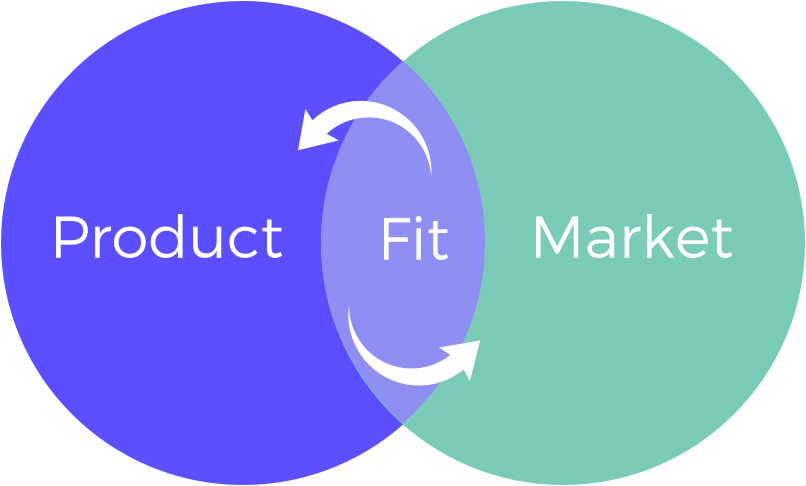Product Market Fit (PMF) means that your product has successfully addressed the needs of your target customer segments or personas, leading to significant numbers of customers buying, using, and recommending your product. This level of engagement ensures sustainable growth and profitability for the product.
Identifying Product Market Fit
No single metric can definitively determine when a business has achieved product-market fit. However, several qualitative and quantitative signals indicate a company is moving in the right direction with its offering:
1. Quantitative Signals:
NPS Score: A high Net Promoter Score indicates strong customer satisfaction and loyalty.
Retention Rates: Measure how many users continue to use your product over time.
Growth Rate: A steady or increasing growth rate shows expanding user adoption.
Conversion Rate: Track the percentage of users who take a desired action, such as making a purchase or signing up for a newsletter.
Usage Rate: Monitor how frequently users engage with your product.
Organic Growth: Observe the rate at which new users are joining your product through word-of-mouth and other non-paid channels.
Market Share: An increasing market share demonstrates your product's competitive strength.
2. Qualitative Signals:
Word of Mouth: If your customers are talking about your products with others, they effectively become your product’s sales reps.
Media and Industry Attention: Increased calls from the media or industry analysts and more frequent coverage of your product and company signal growing interest and validation from the market.
Steps to Build Product Market Fit
Identify & Define the Problem: Clearly articulate the problem your product aims to solve. Understanding this is crucial for creating a solution that resonates with your target audience.
Determine the Target Audience or Personas: Identify who your ideal customers are. Create detailed personas to understand their demographics, behaviors, needs, and pain points.
Identify Pains and Gains of the Target Audience: Understand the challenges (pains) your target audience faces and the benefits (gains) they seek. This will help in tailoring your product to meet their needs effectively.
Define the Product’s Value Proposition: Articulate how your product uniquely solves the identified problem and provides value to the customer. This value proposition should be compelling and clear.
Specify your MVP Feature Set: Determine the minimum viable product (MVP) feature set that will allow you to launch quickly and start gathering user feedback.
Create an MVP Prototype: Develop a prototype of your MVP. This prototype should be functional enough to be tested by real users.
Test your MVP with Customers: Release your MVP to a select group of users and gather their feedback. Observe how they interact with the product and what improvements can be made.
Iterate to Improve Product-Market Fit: Use the feedback from your MVP testing to make necessary adjustments. Continuously iterate on your product to better meet the needs of your target audience and achieve a stronger product-market fit.
Achieving PMF is an ongoing process that requires a deep understanding of your customers and a willingness to adapt and refine your product. By systematically identifying and addressing the needs of your target audience, you can build a product that not only fits the market but also thrives in it. Keep iterating, keep testing, and keep listening to your customers to ensure your product remains aligned with their evolving needs and expectations.



Basic yet critical recommendations!